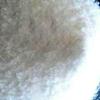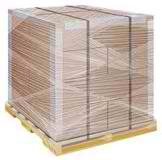SDS of Butylated Hydroxyanisole Pure BP Ph Eur USP NF FCC Food Grade Manufacturers
CAS Number 25013-16-5
BHA Butylated Hydroxyanisole -- BHT Butylated Hydroxytoluene -- TBHQ Tertiary Butylhydroquinone
BHA Butylated Hydroxyanisole BP Ph Eur USP NF FCC Food Grade Manufacturers.
BHA Butylated Hydroxyanisole SDS GHS, Safety Data Sheet
MSDS, Material Safety Data Sheet 30-Aug-22
1. Product Identification
Product Name & Other Names: BHA or Butylated Hydroxyanisole or "tert-butyl-4-methoxyphenol (2-and 3-mixture)" or tert-butyl-p-methoxyphenol or "t-butyl hydroxyanisole" or mono-tert-butyl-4-hydroxyanisole.
CAS No.: 25013-16-5
EINECS EC Number: 246-563-8
Molecular Weight: 180.25
Chemical Formula: C11H16O2
Relevant uses and uses advised against (if any): Industrial use only.
2. Hazards Identification
GHS, Globally Harmonized System Classification in accordance with 29 CFR 1910
Classification according to Regulation (EC) No 1272/2008
Acute toxicity, oral (Category 4)
Skin irritation (Category 2)
Eye irritation (Category 2A)
Carcinogenicity (Category 2)
Specific target organ toxicity - single exposure (Category 3), Respiratory system
Labeling according to GHS & Regulation (EC) No 1272/2008
GHS Label Elements  Irritant |
GHS Label Elements |
Signal Words: Warning
Hazard statements:
H302: Harmful if swallowed.
H315: Causes Skin Irritation.
H319: Causes serious eye irritation.
H335: May cause respiratory irritation
H351: Suspected of causing cancer.
Precautionary statements:
P202: Do not handle until all safety precautions have been read and understood.
P260: Do not breathe dust/fume/gas/mist/vapors/spray.
P264 Wash thoroughly after handling.
P270: Do not eat, drink or smoke when using this product.
P273: Avoid release to the environment.
P280: Wear protective gloves/protective clothing/eye protection/face protection.
P281: Use personal protective equipment as required.
P314: Get medical advice/attention if you feel unwell.
P330: Rinse mouth.
P301+P312: IF SWALLOWED: Call a POISON CENTER or doctor/ physician if you feel unwell.
P302+P352: IF ON SKIN: Wash with plenty of soap and water.
P305+P351+P338: IF IN EYES: Rinse cautiously with water for several minutes. Remove contact lenses, if present and easy to do. Continue rinsing.
P308+313: IF exposed or concerned: Get medical advice/attention.
P362: Take off contaminated clothing and wash before reuse.
P332+P313: If skin irritation occurs: Get medical advice/attention.
P405: Store locked up.
P501: Dispose of contents/container in accordance with local/regional/national/international regulation.
3. Composition/Information on Ingredients
Product Name & Other Names: BHA or Butylated Hydroxyanisole or "tert-butyl-4-methoxyphenol (2-and 3-mixture)" or tert-butyl-p-methoxyphenol or "t-butyl hydroxyanisole" or mono-tert-butyl-4-hydroxyanisole.
CAS No.: 25013-16-5
EINECS EC Number: 246-563-8
4. First Aid Measures
Always seek medical attention after first aid measures are provided.
Inhalation: Remove to fresh air. If not breathing, give artificial respiration. If breathing is difficult, give oxygen. Get medical attention.
Ingestion: Never give anything by mouth to an unconscious person. Get medical attention.
Skin Contact: Wipe off excess material from skin then immediately flush skin with plenty of water for at least 15 minutes. Remove contaminated clothing and shoes. Get medical attention. Wash clothing before reuse. Thoroughly clean shoes before reuse.
Eye Contact: Immediately flush eyes with plenty of water for at least 15 minutes, lifting lower and upper eyelids occasionally. Get medical attention immediately.
5. Fire Fighting Measures
Flammability of the Product: May be combustible at high temperature..
Flash Points: 156C.
Products of Combustion: Carbon dioxide, Carbon monoxide, fumes.
Explosion: Slightly explosive in presence of heat.
Fire Extinguishing Media: Use any means suitable for extinguishing surrounding fire. Use water spray, alcohol-resistant foam, dry chemical or carbon dioxide.
Special Information: In the event of a fire, wear full protective clothing and NIOSH-approved self-contained breathing apparatus with full face piece operated in the pressure demand or other positive pressure mode. At high temperatures or when moistened under fire conditions, it may produce toxic or irritating fumes. Containers may explode on heating.
6. Accidental Release Measures
Personal precautions, protective equipment, and emergency procedures: Ventilate area of leak or spill. Avoid breathing dust/fumes/gas/mist/vapors/spray. Use individual protective equipment (waterproof boots, suitable protective clothing, safety glasses, etc.). Restrict unprotected personnel from the area. Prevent any contact with hot surfaces. Do not approach facing the wind.
Environmental precautions: Do not let the product enter drains, soil, or water sources.
Methods and materials used for containment Cleanup procedures and Storage: Avoid touching the spilled material. Contain spilled material. Cover with an inert, non-combustible absorbent material, (e.g. sand, earth, diatomaceous earth, vermiculite). Vacuum or sweep-up and remove to an approved disposal container.
7. Handling and Storage
Precautions for safe handling: Apply according to good manufacturing and industrial hygiene practices. Ensure proper ventilation. In case of insufficient ventilation, wear suitable respiratory equipment. Wash thoroughly after handling. Do not drink, eat, or smoke while handling. Avoid contact with skin, eyes, and clothing. Minimize dust generation. Avoid breathing dust/fumes/gas/mist/vapors/spray. Avoid contact with eyes, skin, and clothing. Keep container tightly closed. Avoid ingestion and inhalation. Use individual protective equipment (waterproof boots, suitable protective clothing, safety glasses, etc.). Prevent any contact with hot surfaces.
Conditions for safe storage, including any incompatibilities: Store in cool, dry, and ventilated area away from heat sources and protected from sunlight in tightly closed original container. Keep air contact to a minimum. Store protected from heat, sparks and ignition sources and incompatible materials. Avoid contact with skin and eyes. Avoid inhalation of dust/mist/vapor. Do not store with incompatible materials like strong oxidizing agents, reducing agents, metals, and acids.
8. Exposure Controls/Personal Protection
Airborne Exposure Limits: Not established.
Ventilation System: A system of local and/or general exhaust is recommended to keep employee exposures as low as possible. Local exhaust ventilation is generally preferred because it can control the emissions of the contaminant at its source, preventing dispersion of it into the general work area.
Personal Respirators (NIOSH Approved): For conditions of use where exposure to dust or mist is apparent and engineering controls are not feasible, a particulate respirator may be worn. For emergencies or instances where the exposure levels are not known, use a full-face positive-pressure, air-supplied respirator.
Skin Protection: Wear protective gloves and clean body-covering clothing.
Eye Protection: Use chemical safety goggles and/or full face shield where dusting or splashing of solutions is possible. Maintain eye wash fountain and quick-drench facilities in work area.
Other Control Measures: Maintain good housekeeping in work area. Handle in accordance with good industrial hygiene and safety practice. Wash hands after handling.
9. Physical and Chemical Properties
Appearance: White to off-white waxy solid.
Odor: It has faint typical odor.
Odor threshold: Not available.
pH: Not available.
Relative density: around 1.05
Boiling Point: 264-270C.
Melting Point: 48 - 55C.
Flash point: Not available.
Auto-ignition temperature: Not available.
Decomposition temperature: Not available.
Upper/lower flammability or explosive limits: Not available.
Vapor pressure: Not available.
Vapor density: Not available.
Evaporation rate: Not available.
Flammability (solid, gas): Not available.
Partition coefficient: n-octanol/water: Not available.
Solubility: It is soluble in water.
Viscosity: Not available.
10. Stability and Reactivity
Stability: Stable under ordinary conditions of use and storage.
Hazardous Decomposition Products: It emits Carbon dioxide, Carbon monoxide & Fumes.
Hazardous Polymerization: Will not occur.
Incompatibilities: Strong oxidizing agents, reducing agents metals and acids.
Conditions to Avoid: Incompatibles and moisture.
Phenols are incompatible with strong reducing substances such as hydrides, nitrides, alkali metals, and sulfides.
Avoid use of aluminum, copper and brass alloys in storage and process equipment.
Heat is generated by the acid-base reaction between phenols and bases.
Phenols are sulfonated very readily (for example, by concentrated sulfuric acid at room temperature), these reactions generate heat.
Phenols are nitrated very rapidly, even by dilute nitric acid.
Nitrated phenols often explode when heated. Many of them form metal salts that tend toward detonation by rather mild shock.
Segregate from oleum, nitric acid and chlorosulfonic acid.
11. Toxicological Information
Toxicity data
ORL-RAT LD50 > 2000 mg kg-1
ORL-MAM LD50 1100 mg kg-1
Carcinogenic Effects: Classified 2B (Possible for human.) by IARC. Classified 2 (Some evidence.) by NTP.
Mutagenic Effects: Mutagenic for bacteria and/or yeast. May cause damage to the following organs: blood, liver, upper respiratory tract, skin.
Teratogenic Effects: Teratogenic effects have occurred in experimental animals.
Developmental Toxicity: Adverse reproductive effects have occurred in experimental animals.
May affect genetic material (mutagenic). May cause adverse reproductive effects based on animal test data. May cause cancer.
12. Ecological Information
Toxicity data: Not available.
Products of Biodegradation: Possibly hazardous short-term degradation products are not likely. However, long term degradation products may arise.
Results of PBT and vPvB assessment: This substance/mixture contains no components considered to be either persistent, bioaccumulative and toxic (PBT), or very persistent and very bioaccumulative (vPvB) at levels of 0.1% or higher.
13. Disposal Considerations
Whatever cannot be saved for recovery or recycling should be managed in an appropriate and approved waste disposal facility. Processing use or contamination of this product may change the waste management options. State and local disposal regulations may differ from federal disposal regulations.
14. Transport Information
USA DOT, ADR/RID Europe & Canada TDG: Not dangerous goods
IATA: Not dangerous goods.
15. Regulatory Information
USA:
SARA 311/312 Hazards: Immediate & Delayed Health Hazard. See section 2.
Section 16 - Additional Information
DISCLAIMER: The information and recommendations set forth herein (hereinafter "Information") are presented in good faith and believed correct as of the date hereof. It is compiled from various sources and it is not necessarily all inclusive nor fully adequate in every circumstance. In addition, these suggestions should not be confused with nor followed in violation of applicable laws, regulations, rules or insurance requirements applicable. This MSDS sheet is intended only as a guide to the appropriate precautionary handling of the material by a properly trained person using this product. Individuals receiving the information must exercise their independent judgment in determining its appropriateness for a particular purpose.

Butylated Hydroxyanisole BP Ph Eur USP NF FCC Food Grade Manufacturers:
Muby Chemicals & Associated Cos
BANDEALI BUILDING, CHINCHBUNDER, MUMBAI 400009, INDIA.
TEL: 91-22-23728264. Gujarat & Mumbai India.
info(At the Rate i.e. @)mubychem(dot)com

Copyright and Usual Disclaimer is Applicable
Last updated
30-aug-22

Exports to USA UAE Europe South Africa Tanzania Kenya Uganda Egypt Nigeria Turkey Brazil Chile Argentina Dubai Cameroon Guatemala Mexico etc.
Barter
They who love thee on this earth, keep calling on thee and chanting thy beads
Lest thou forgetest.
They assign the credit of their hard work to your blessings
They keep you amused.
They come to thy temple with baskets of fruits, as if you were a glutton
They deny the same to their children.
They offer you milk for a bath and burn the ghee
They hardly understand the meaning of it.
They bring gold and diamonds. They come with beating of drums
They love to advertise their offerings.
They offer you a small bribe as advance for booty, called lottery
They love to dream.
I do not bow down at your door
I do not bargain for booty
Your promise of the heaven does not lure me
Your hell-fire does not scare me
I do not even know the proper method of prayer
I do not offer any thing to you
Ages have gone by and I have not seen you my lord
Yet my love for you keeps waiting for you.

